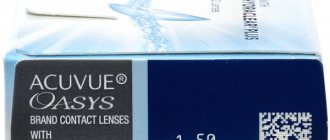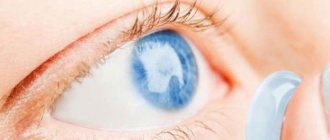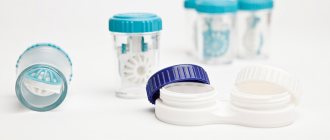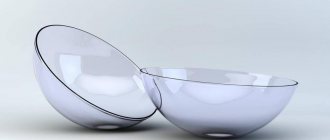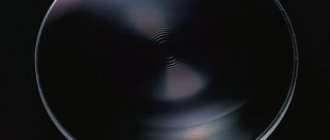The latest developments in ophthalmology will help not only to see well and correct vision, but also to look at the world from a completely different perspective. What do you think of smart contact lenses?
Scientists from all over the world are working not only on glasses gadgets: in the near future, a whole class of new wearable devices is expected to appear - special contact lenses that allow you to turn into a real superhero.
What opportunities will the latest technologies in the field of contact vision correction bring into our lives, what dreams will come true, and what dreams are destined to remain just a fantasy, we will find out in today’s selection of gadgets of the future.
Every day, people bump into each other on the subway, in stores, in crowded squares and other busy places because they concentrate their attention on their favorite smartphones. Designers from China Eun-Gyeong Gwon and Eun-Jae Lee have created special lenses I Contact , which will allow you to control your smartphone or computer using your vision. Let's hope there will be fewer bumps!
Initially, the project was created to help people with disabilities. But during the creation process, it became clear that ordinary people would also be interested in this gadget. I Contacts look no different from ordinary contact lenses, but their surface contains many sensors to track eye movements. The read coordinates are transferred to your mobile device, and the mouse cursor is placed. According to the developers, this way you can completely free your hands from controlling your smartphone.
Unfortunately, the idea is too “raw” and many details have not been thought through. For example, how will they be charged? Presumably, in the future, their nutrition will be provided by body energy. Ease of use in everyday life is also quite questionable...
Remember the time when a person talking “to himself” via a Bluetooth headset aroused interest and bewilderment? Now this won’t surprise anyone. However, the following picture may soon become commonplace: a huge number of people sitting in the park and just looking into the distance. No, they didn't freeze, they all purchased smart lenses .
Just imagine: you are sitting at breakfast and at the same time you are at some conference, choosing a route for your trip, the weather for today, and they also show you how many calories are in this bun!
It all sounds like something out of a science fiction novel, but bioengineers at the University of Washington are working on a project for contact lenses with a transparent LED powered by solar panels . This technology can be applied in countless ways, from monitoring vision performance to translating text right under your eyes, and this time in the literal sense of the word. It can also help people with diabetes to always see their blood sugar levels, or track drugs in the patient’s blood.
“Our tests confirmed the possibility of integrating antennas, radio chips and microscopic light sources into contact lenses used on living eyes.”
– noted the project manager, commenting on the successful testing of lenses on live rabbits .
The lens under test was remotely actuated using a 5mm antenna printed on the surface of the lens itself. The source, located ten centimeters from the rabbit's eyes, sent signals of different frequencies, which were picked up by the lens.
To achieve an incredibly short focal length, the lens was designed in the form of a Fresnel , in which a series of concentric circles focus a beam of light to a single point.
Scientists have encountered one main problem when working with such lenses - the low resolution of the image projected onto the retina. However, the creators of the project remain optimistic and are confident that in the future smart lenses will become commonplace.
Michael McAlpine , a senior research scientist at Princeton University, and his team have demonstrated a technology for 3-D printing complex, microscopic electronics onto irregularly shaped surfaces, such as a lens .
“As part of the project, we printed color LEDs on hard contact lenses made of plastic”
McAlpin said
Scientists have used tiny crystals to create LEDs that can generate colored light. By combining particles of different sizes, it is possible to change the color of the emitted beam of light. At the moment, orange and green colors have been successfully obtained.
And although this project is not aimed specifically at creating lenses of the future that allow one to see augmented reality, the developed technology for “printing” microcircuits on lenses will make it possible in the future to improve the process of creating and developing a variety of types of contact lenses.
(Be the first to vote for this article!)

